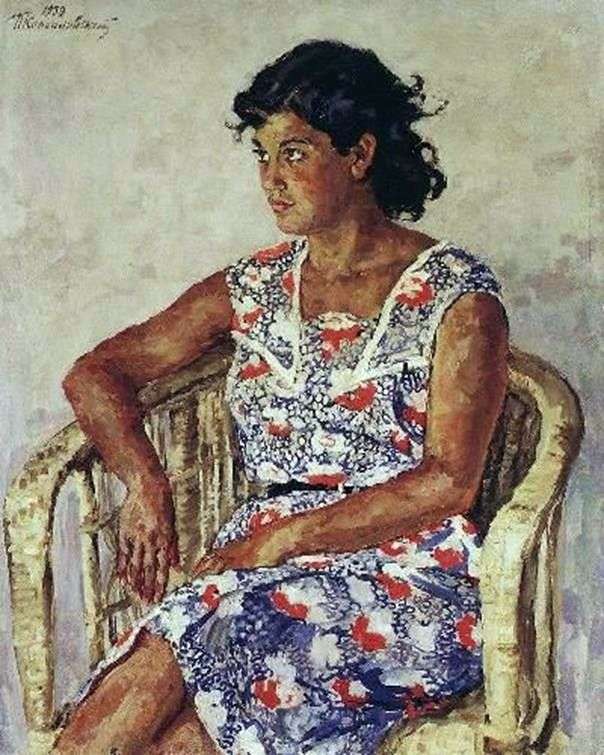
“The main thing in painting is painting – for only then the idea, the thought can influence the viewer… Such is the nature of art.” These words were often repeated by Pyotr Petrovich Konchalovsky, a painter by nature, passionately carried away by the colorful elements of the world. Konchalovsky worked in all genres without exception, not giving preference to any one.
However, since the beginning of the 1930s, the artist’s interest in the portrait has increased. It was during this period that he was led to write many portraits of the Spaniards who left their country because of the established fascist regime. Among them was the girl Khulita Perekacho, for whom Russia, where she “received an excellent education,” became the second motherland. The acquaintance of Konchalovsky with Spain itself, which left an unforgettable impression in his soul, was held in 1910. This country gave the artist a lot: “sharpened his eyesight and strengthened his hand,” he remembered her bright colors, and especially the types of “wild, beautiful and proud people.”
Beginning to work on a new portrait, Konchalovsky always looked for those picturesque means and techniques that strengthened the image, but never neglected the transfer of similarity, originality and individuality of the model, finding on their canvas their plastic equivalent, combining color and form into one indissoluble whole. Konchalovsky was happy when he “managed to grasp the initial fresh impression of nature,” as a rule, an exciting artist and helping to shape the idea.
A young Spaniard, Julia Pereccaccio, depicted in a bright dress, would seem to be sitting quietly in a wicker chair, resting her hand on the armrest. But the most perspective – the side view, the position of the figure diagonally and the rotation of the body in three quarters, not only creates a depth of space, but also gives the image an internal dynamics. It was this compositional device, which Konchalovsky considered to be the “soul of every work”, that allows the artist to combine strict harmony and a temperament torn from within.
In the portrait everything is justified by content. Emotional sounding is created not only by the plasticity of the brushstroke, by the textural variety, but, above all, by the rich sonorous color. The brightness of the intense color accent of the dress breaks out from the general gamut of pulsating gray with a lilac shade of background, further exacerbating the image. At Konchalovsky “the paint did not die in kind, but reincarnated in it.” In this portrait, the artist does not aspire to an exact analysis of the overall appearance of the model, but emphasizes only those features that seem to him essential and important. Moods are not important. Beautiful girl’s tanned face breathes with firmness and confidence. Looking out from under his black eyebrows, which reflected the sense of historical drama, reflection on the fate of his homeland and his fate, strikes with energy and determination.
Proceeding from his own concept of creating the image, Konchalovsky said: “I do not like to give a person in a portrait in a portrait… I always try to discover the universal in it, because it’s not the external resemblance, but the artistic quality of the image.” So, having received a new being and discovering its spiritual essence, the image of the Spanish girl Julita Pereccicho began to exist in reality, began to act on our perception in the same way that all living things act.
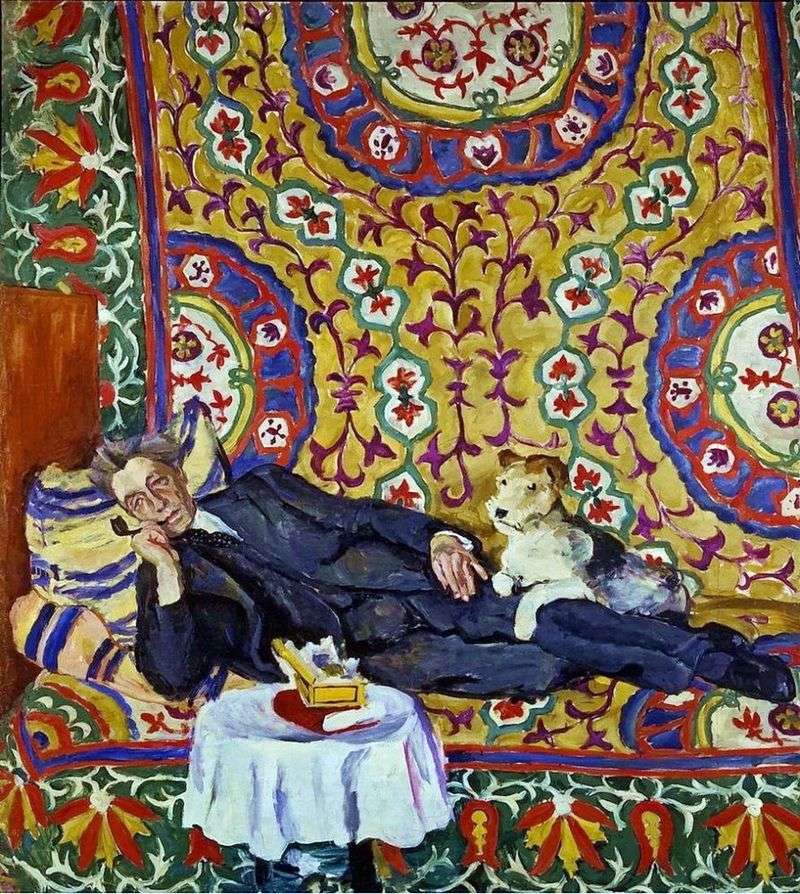 Portrait of VE Meyerhold by Pyotr Konchalovsky
Portrait of VE Meyerhold by Pyotr Konchalovsky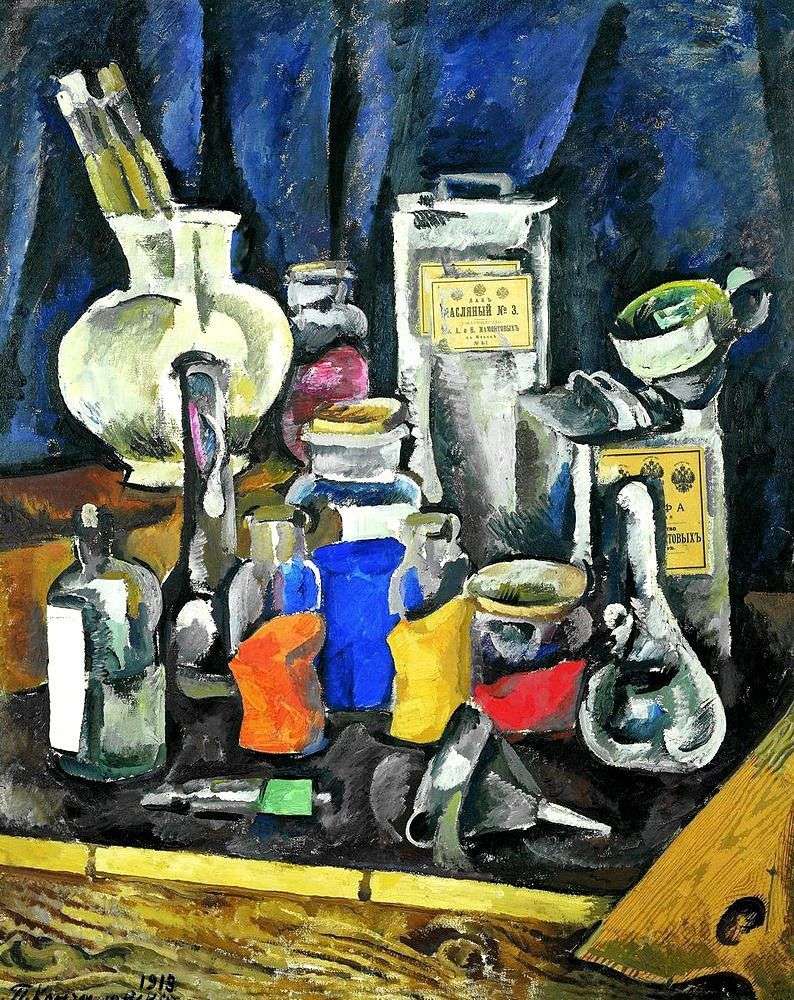 Dry paint by Pyotr Konchalovsky
Dry paint by Pyotr Konchalovsky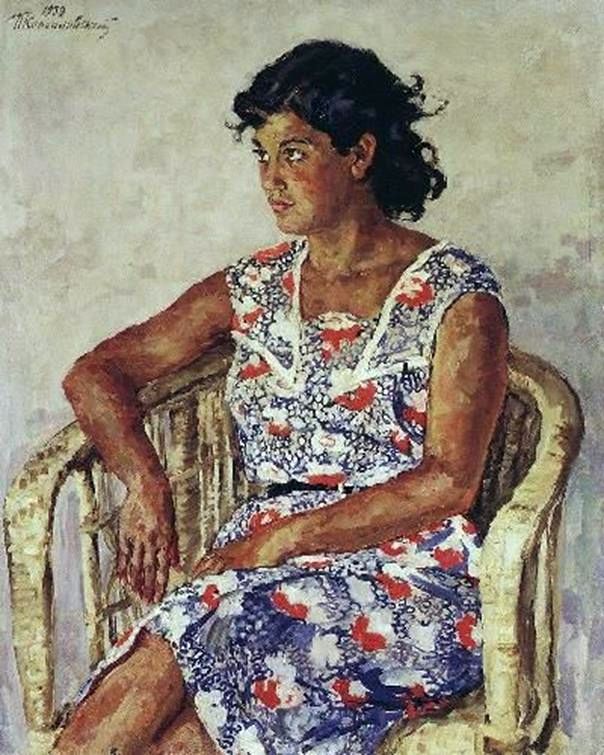 Portrait de Julita Perekaccio – Pyotr Konchalovsky
Portrait de Julita Perekaccio – Pyotr Konchalovsky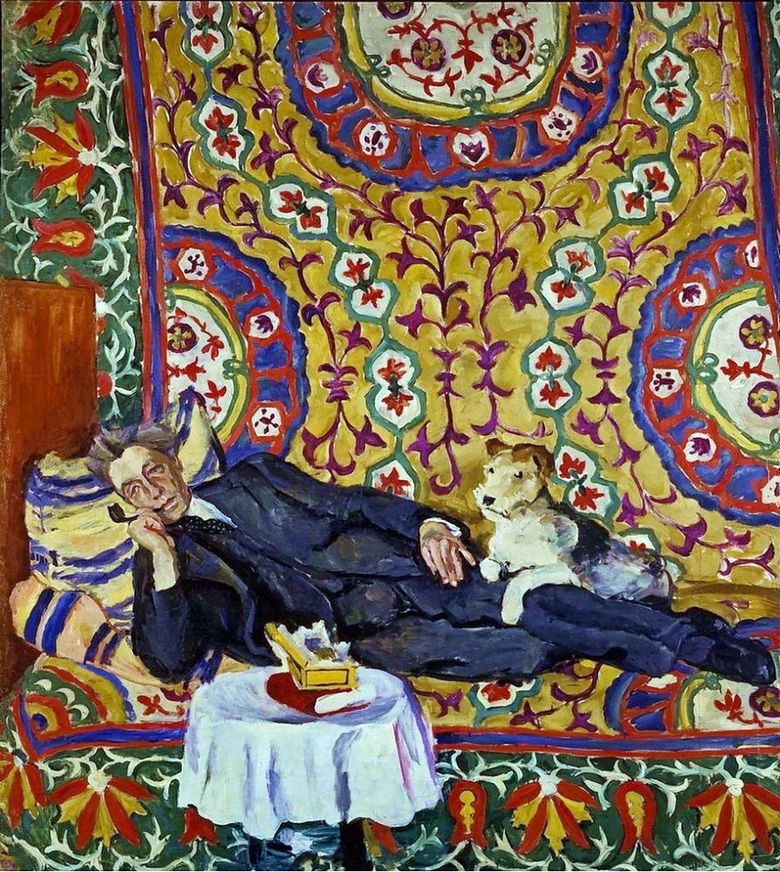 Portrait de V. E. Meyerhold – Pyotr Konchalovsky
Portrait de V. E. Meyerhold – Pyotr Konchalovsky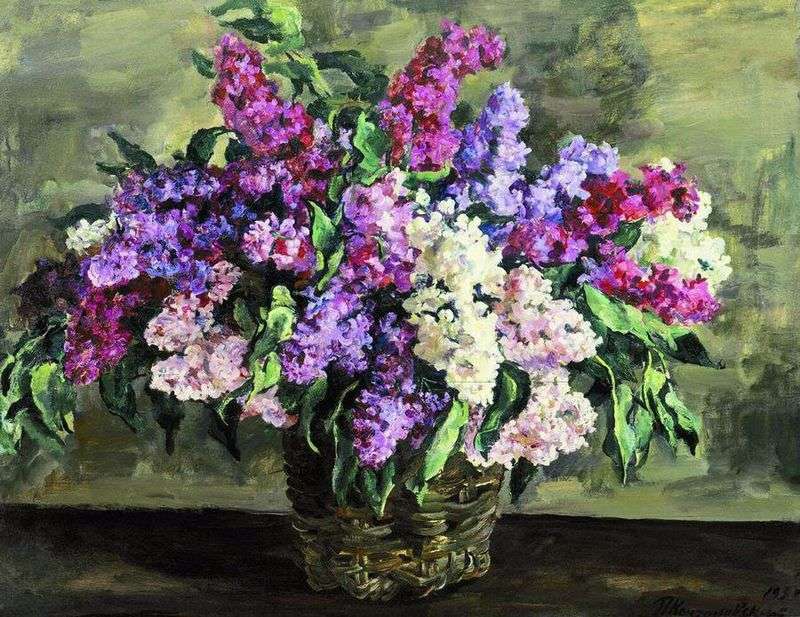 Lilac in the basket by Petr Konchalovsky
Lilac in the basket by Petr Konchalovsky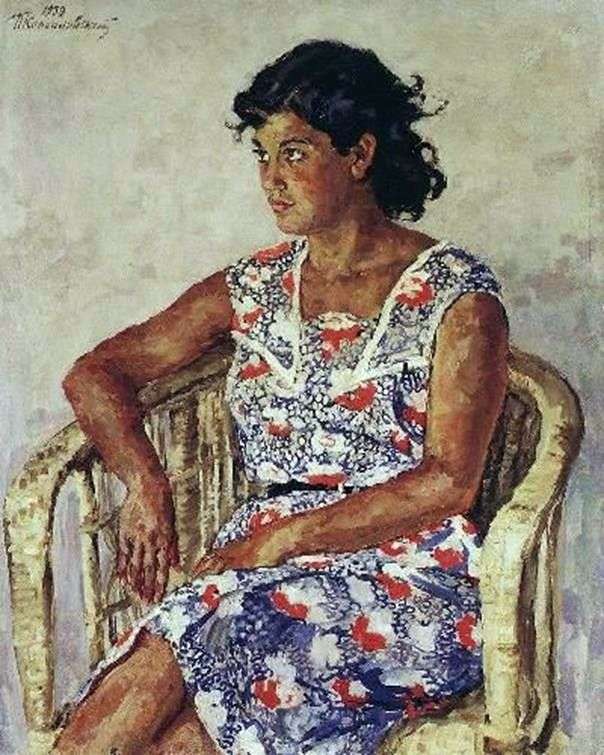 Retrato de Juliet Perekacho – Peter Konchalovsky
Retrato de Juliet Perekacho – Peter Konchalovsky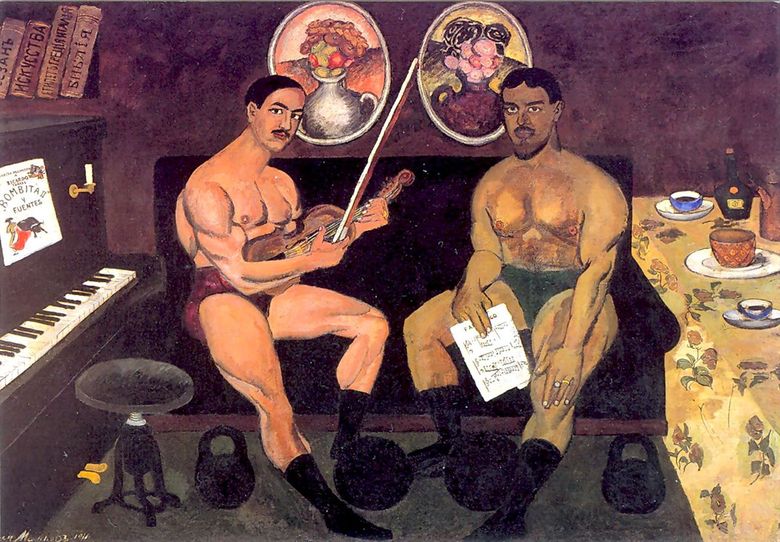 Autoportrait et portrait de Pyotr Konchalovsky – Ilya Mashkov
Autoportrait et portrait de Pyotr Konchalovsky – Ilya Mashkov Peintures sèches – Pyotr Konchalovsky
Peintures sèches – Pyotr Konchalovsky